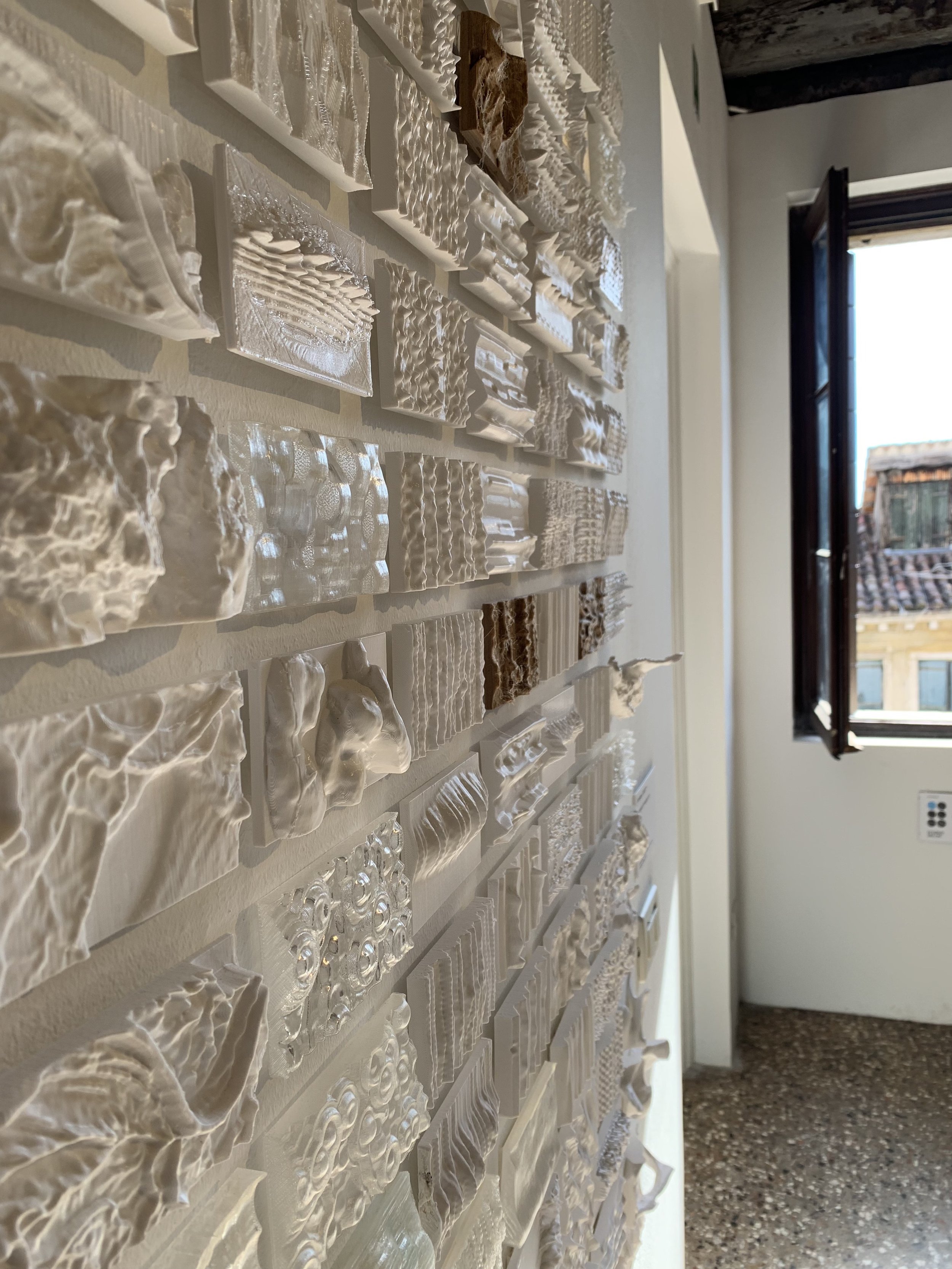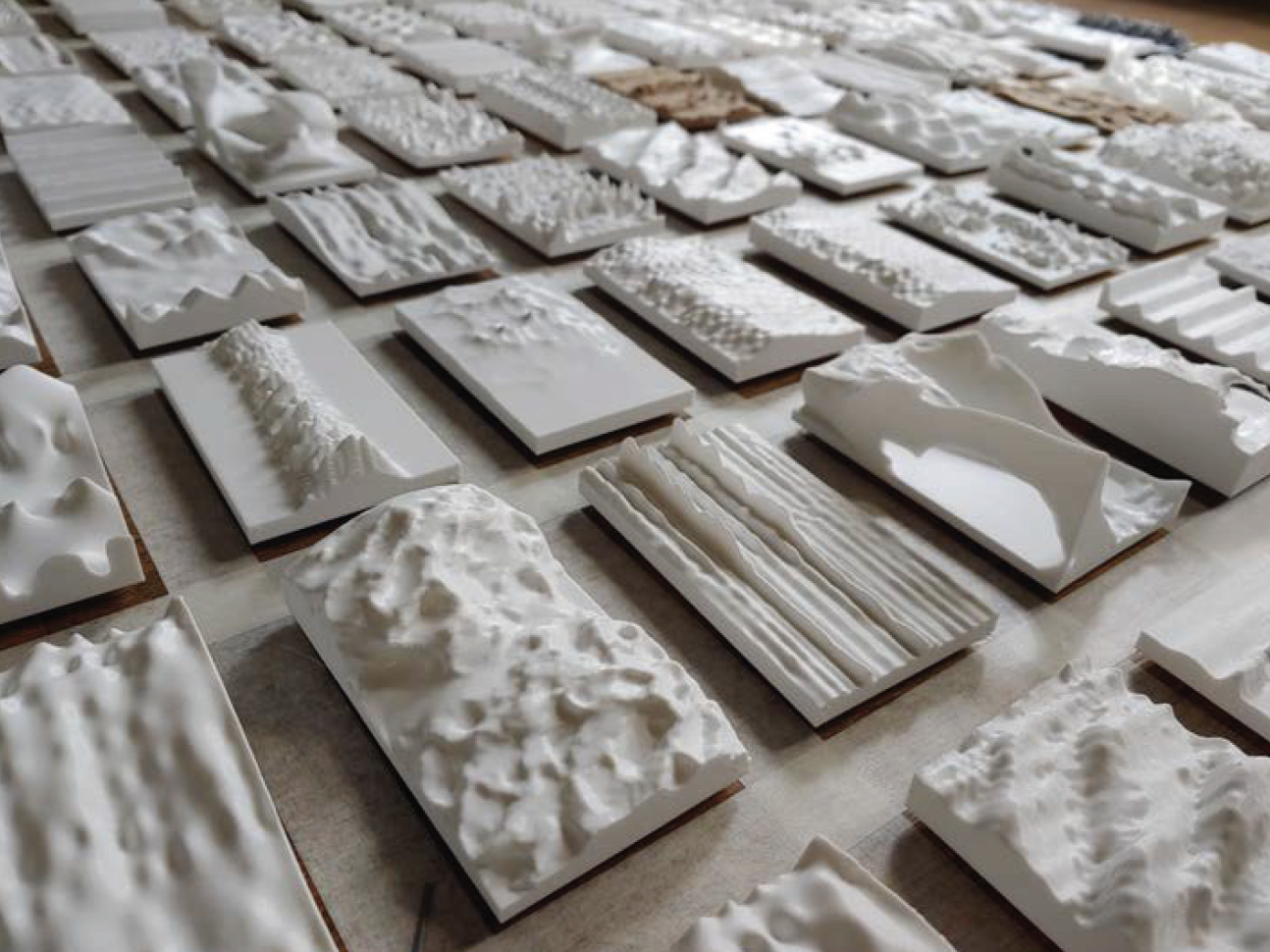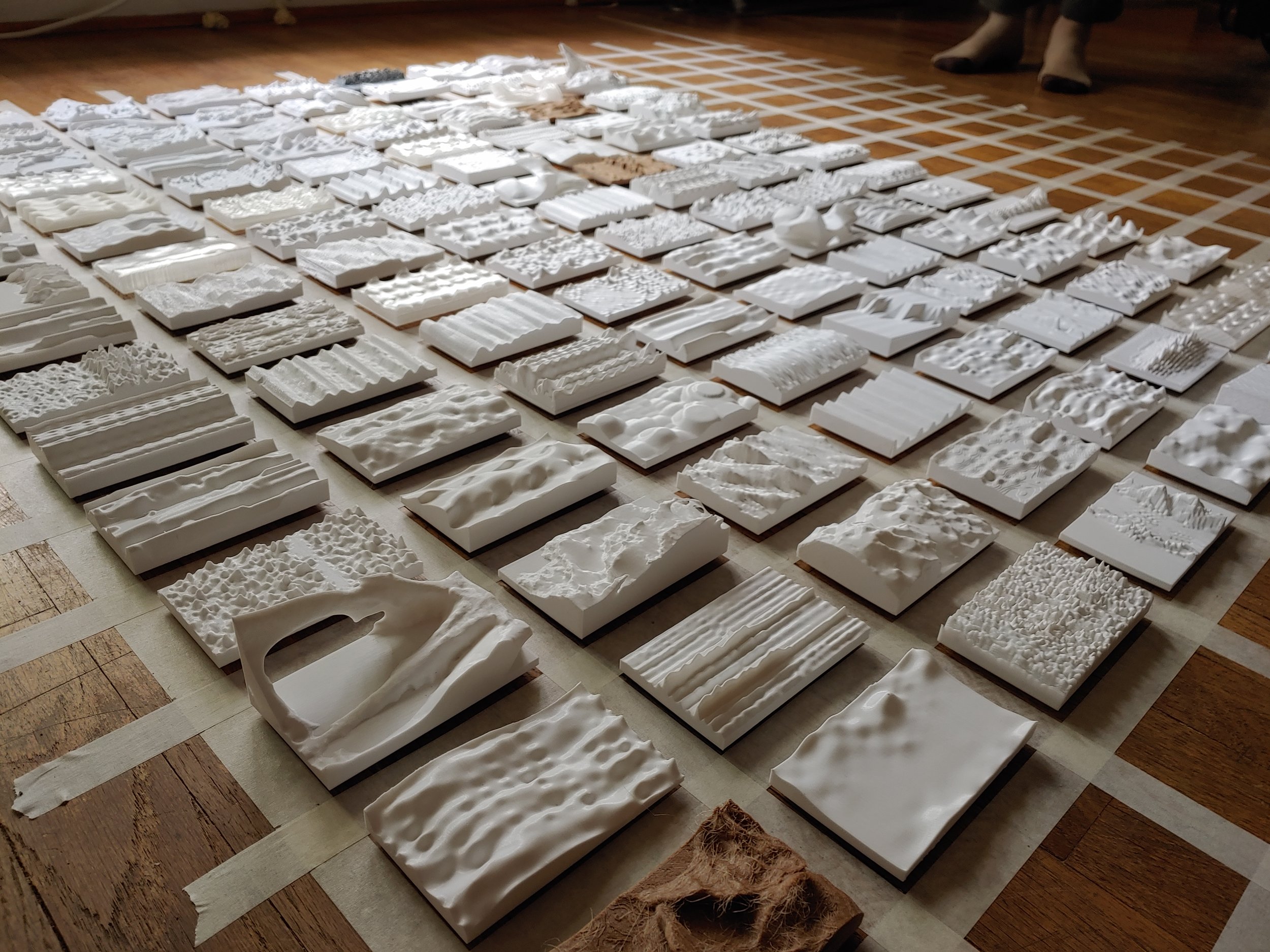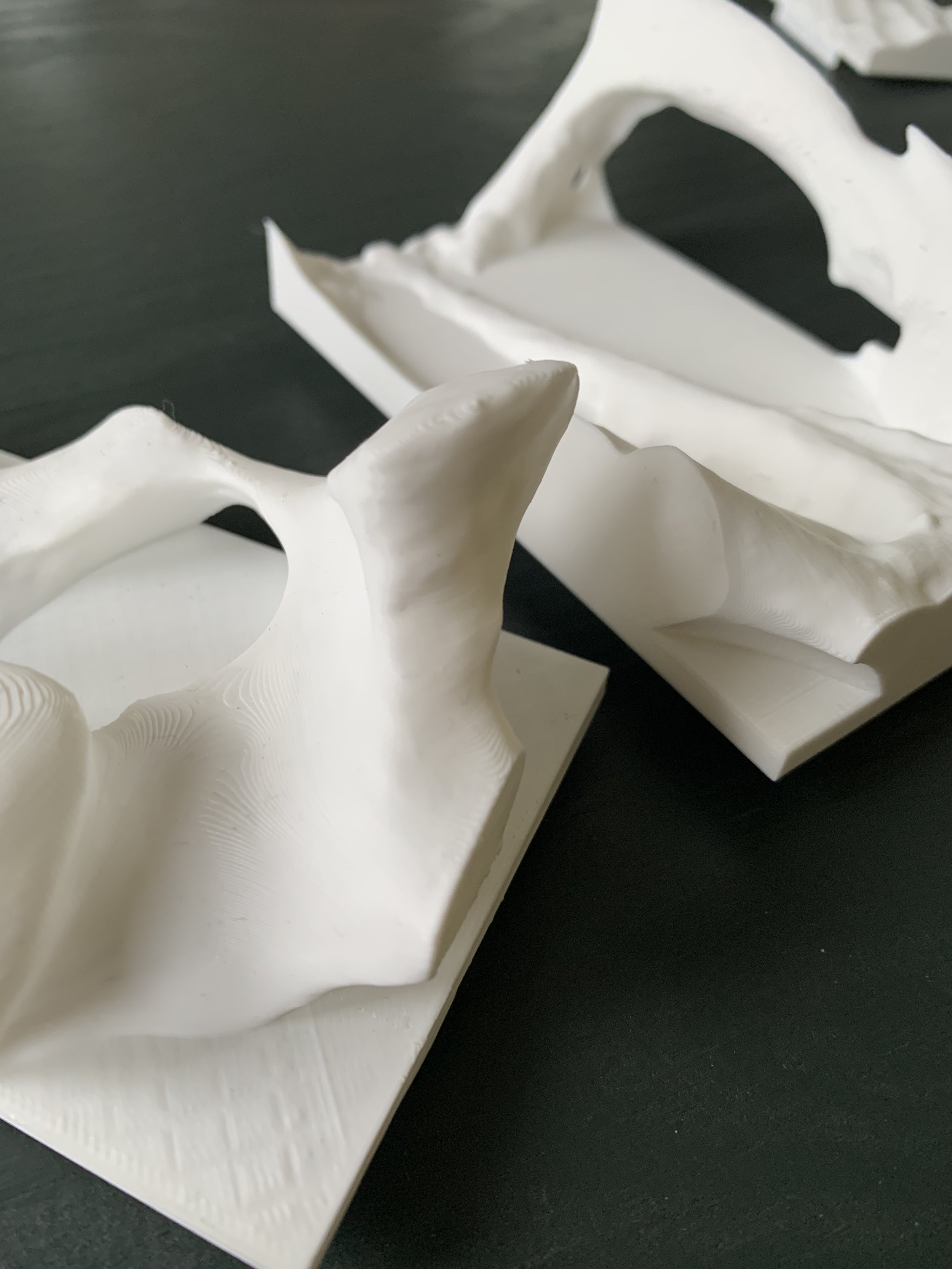Topography
Topography: Feminist Re-mapping of the Space of Fossil Fuel Transport (2021) is an installation for the European Cultural Centre exhibition Time, Space, Existence at Palazzo Mora, Venice, Italy.
Fossil fuel pipelines in North America are inscribed first as lines on survey maps, then as surveys on land, then as bulldozer cuts, and then by the construction of thousands of miles of meter-wide, pressurized pipelines of bitumen and natural gas. In this work, we re-draw the same land here in terms of its cycles, indivisibility, and reproduction. Cycles of river flows, salmon runs, and tides, as described in three dimensions of space, time, and volume, illustrate a completely new topographic ground and a recalculation of its value, measured now in life, rather than in profit. The new topography should demonstrate the human experience of time as cyclical—in weather and water levels, and as material decays and accumulates. In this way, the new topography should draw attention to the simultaneous ecological past and future of these lands.
This topography describes lands impacted by the proposed development of a large natural gas pipeline in Oregon, USA as well as other lands that are impacted by fossil fuel development in the Pacific Northwest of North America. The places described in this project are primarily within the traditional homelands of the Coos, Coquille and Upper Umpqua peoples but also include other lands in the Pacific Northwest that are impacted by ongoing and unreconciled harm from colonial settlement and extraction.
The work builds on student work from the University of Oregon Department of Architecture design studio “Lines, Pipelines, and the Contested Space of Transcontinental Fossil Fuel Transport in the Pacific Northwest” (2016) and on the Pipeline Project (FLOAT, 2019), three built installations in protest of a major natural gas pipeline, Oregon, USA.
Research assistants: Mike Kwilos, Garrett Leaver, Heather Tietz, and Jeremy McCarthy.








